Using coffee in everyday life - what can you make with your own hands from coffee beans and grounds?
The use of coffee in everyday life is not limited to preparing a tasty and aromatic drink. Whole grains are used for decorative purposes, ground grains are used as a flavoring agent, and the grounds that remain after brewing serve as an excellent abrasive. However, this is by no means an exhaustive list of ways to use coffee in the home.
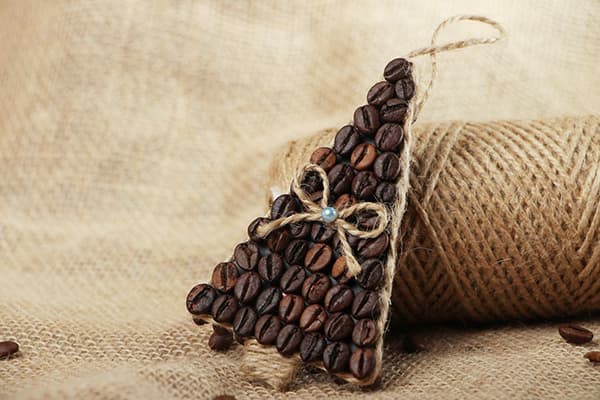
What can be made from coffee beans?
Coffee beans are an ideal material for creativity. They are not harmful to health and do not poison the air with toxins; they are beautiful in themselves, and can be easily painted if necessary. The scope of their application is limited only by imagination.
Painting
Even someone who doesn’t know how to draw can make a picture out of coffee beans. The secret is simple - the image is first printed on a printer, and coffee is glued on top of the paint. In this case, there is no need to cover the entire canvas with grains - they are placed only where there are dark areas. For example, if this is a portrait, then only the hair, eyebrows, eyes, lips and nose are blocked. Where fine lines are needed, it is not practical to use whole grains, so they are crushed with a hammer.
Topiary
Topiary is a small (usually up to 20–30 cm in height) tree made from decorative materials. However, it does not have to have a direct resemblance to a tree - for example, topiaries in the shape of a ball or a heart are often found.
To create it you will need the following tools and materials:
- newspaper or toilet paper;
- a small pot or cup for a stand;
- alabaster and water;
- awl;
- a stick (strong enough to support the weight of the top of the topiary, this could be a kebab skewer);
- decorations - optional (colored beads, ribbons or something else);
- quick-setting glue;
- coffee beans;
- PVA glue;
- glue brush;
- disposable plastic or paper cup.
The work is performed according to the following algorithm:
- A piece of newspaper is crumpled in your hands to form a small ball.
- In a glass, dilute PVA glue in half with water.
- The remaining newspaper is torn to shreds.
- The brush is dipped into a glass with an adhesive solution and a newspaper ball is lubricated, after which scraps of paper are randomly placed on top of the sticky layer. Then the solution is applied again and the ball is covered with paper. This operation is repeated until the ball acquires an almost ideal shape and the desired size. It is recommended to make a ball with a diameter of at least 10 cm.
- The base blank is left to dry. This process may take several days, but it cannot be accelerated by placing the ball on the battery or influencing it in any other way.
- When the ball is ready, it is pierced with an awl and a stick moistened with quick-drying glue is inserted into the resulting hole.
- Next, they begin to decorate the topiary by covering the paper ball with coffee beans. Quick-drying glue is also suitable for this.
- Now it's time to prepare the stand. To do this, alabaster is mixed with water in a 2:1 ratio (per 1 kg of alabaster - 0.5 liters of water; the amount of ingredients should be taken in accordance with the volume of the pot or cup). The result will be a slurry that will begin to thicken in about 5 minutes.Complete hardening will occur after 25–30 minutes, so you need to have time to stick a stick with topiary into the not yet hardened solution and hold it in one position until the alabaster turns into stone.
The final stage is decorating the topiary. To disguise alabaster, you can sprinkle coffee beans or colored beads on top of it. The skewer should be braided with ribbons or painted with golden paint. In this case, a pot wrapped in fabric of the same shade will look beautiful.
Stand for pencils or brushes
To make an original stand out of coffee beans, just pour them into a transparent glass container (a vase, an unusual jar, even a small round aquarium will do). In addition to the fact that such a stand will become a decorative item, it will also scent the air in the room. When the smell wears off, you can replace the grains with fresh ones.
Ground coffee - what is it useful for in everyday life?
Coffee is famous for its aroma, and you can enjoy it not only by holding a cup of freshly brewed drink in your hands, but also every time you open the door of a closet or dressing room. To do this, ground grains are poured into small fabric bags - sachets, after which they are laid out on shelves and sometimes even put in clothing pockets. In addition to the fact that wonderful spicy notes create a cozy atmosphere, and in some cases even serve as a substitute for perfume, they will also protect natural fur or wool from moths.
It is also worth using ground coffee if there is an unpleasant odor in the refrigerator. The powder is poured onto a saucer from a tea set (not into a jar - the area of contact with air should be as large as possible) and placed in the refrigerator.Coffee absorbs all the molecules that cause the stench.
Using coffee grounds on the farm
There is no need to throw away your coffee. Most often they try to use it as a fertilizer for plants, but all that the grounds can do after getting into a flower pot is to slightly loosen the soil and change its pH in an acidic direction. Only azaleas or gardenias will like this.
There are more rational and useful ways to use used (from a coffee machine or Turkish coffee) coffee in everyday life:
- Cleaning dishes. Small and not so small particles of grains are an abrasive that easily removes dried-on food residues or traces left from tea leaves, beets and other coloring products. This method cannot be used for light-colored dishes made of porous materials.
- Elimination of foreign odors from hands. After cleaning fish or chopping garlic, you can rub your palms with fresh coffee grounds and then rinse with warm water.
- Making a toning body scrub. If you mix dried coffee grounds with coarse sugar, add a spoonful of honey and a few drops of orange oil, you will get an excellent remedy for cleansing the skin of dead cells. With constant use, the signs of cellulite decrease and rashes disappear.
- Dyeing of natural fabrics. For this purpose, you need to collect quite a lot of grounds, then brew it in boiling water and place cotton or linen material in the water, leaving it there for several hours. The color will depend on the strength of the decoction and the holding time.
Coffee beans or ground coffee that has expired, as well as dried coffee grounds, should not be thrown into the trash - they can always be used at home, be it for creating crafts, taking care of yourself, or scenting rooms.
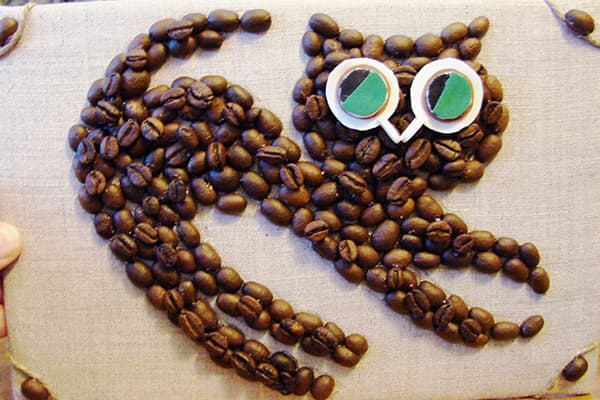
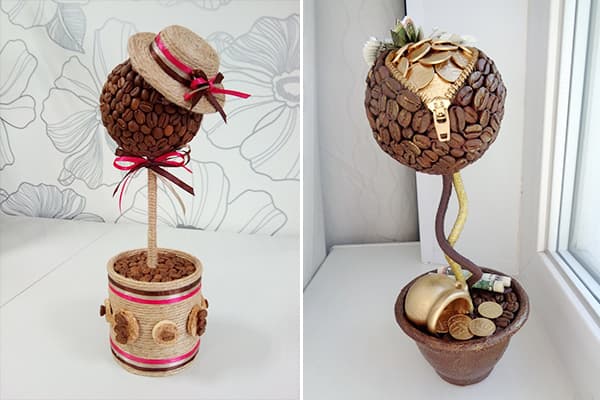
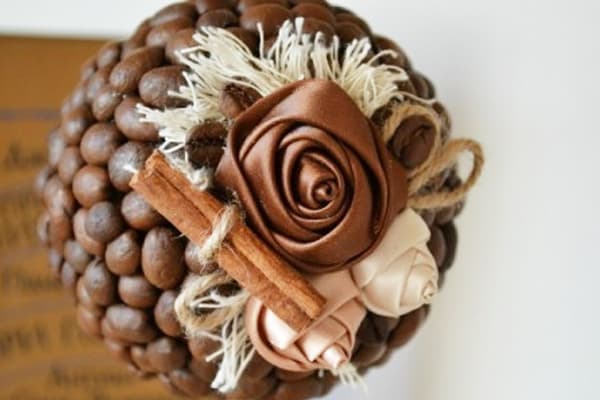
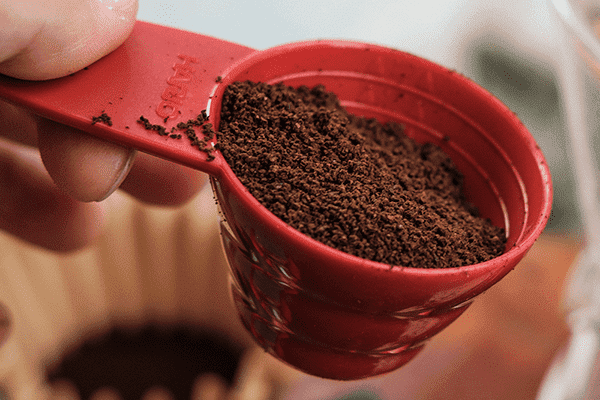
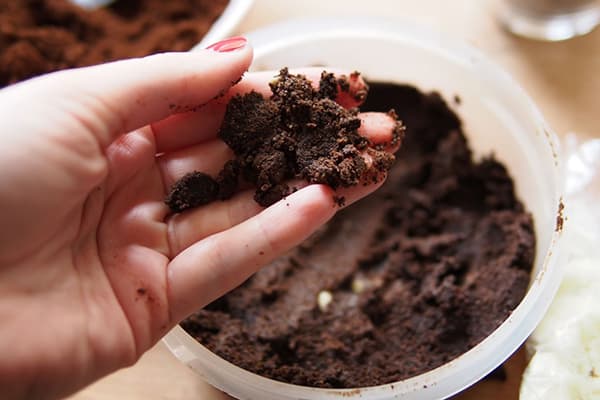
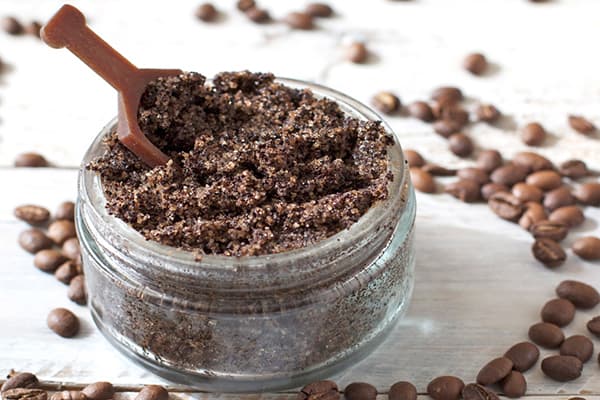
Thank you!